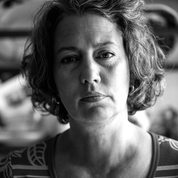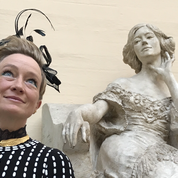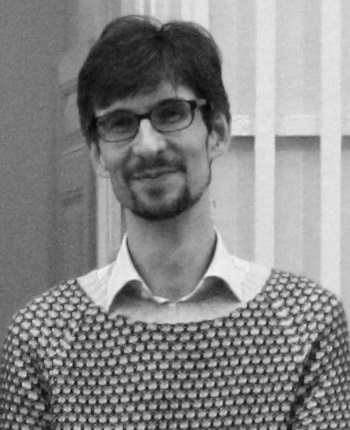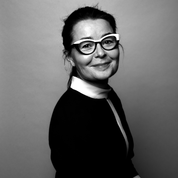Artists who live close to the poverty line and a museum director with a monthly salary of DKK 150.000 have started the discussion about artists' working conditions and remuneration.
The art platform IDOART published one last year examination on the working conditions and salary conditions of artists and curators, Radio24syv could then tell, that the art museum ARoS, as a matter of principle, does not remunerate artists when they lend their works for exhibitions, while the director receives a salary of DKK 150.000 per month.
And on top of all that, Copenhagen Business School published the report The economic space of the visual arts, which showed that a visual artist earns an average of DKK 241.000 per year. Only 91.000 kroner of that is earned from artistic work, and the rest comes from a salaried job.
Trade journal BILLEDKUNSTNEREN has therefore asked six artists and industry experts how we can expand the labor market for professional visual artists, so that more artists can make a living in the profession.
 Mette Marcus, head of the art area at the Bikubenfonden:
Mette Marcus, head of the art area at the Bikubenfonden:
— How can the labor market for visual artists be expanded?
"We believe that more people will open their eyes to the source of innovation and new thinking that artistic professionalism represents. In the Bikubenfonden, we have established a gathering point for artistic development, Art Hub Copenhagen. Here, part of the interdisciplinary collaborations must be between artists and companies, public institutions or knowledge institutions.”
— How can greater contact be created between visual artists' innovative abilities and other industries?
"With Art Hub Copenhagen, we want to facilitate meetings across disciplines and national borders. At the same time, we have seen examples of companies that invite artists to have a workplace in the company and in that way get closer to each other. We hope to see more of that in the future.”
— As a visual artist, are you properly prepared to put your skills to use in interdisciplinary forms of collaboration?
"This is precisely one of the challenges we have focused on in the Bikubenfonden. In our studio program, we work to strengthen competences that go beyond the artistic.
As a newly qualified artist, you have the option of an individual course with an art consultant who can advise on the development of competences within organization and management.
— What are the potentials of the inclusion of artistic competences in companies' development environments, on digital platforms and in other industries?
"In the world we live in, there is a need for thoughts, ideas and proposals for solutions that come from other places than the established and often economically thinking institutions. Here the artist offers a different perspective.”
 Birgitte Kirkhoff Eriksen, director of the Museum of Contemporary Art, Roskilde:
Birgitte Kirkhoff Eriksen, director of the Museum of Contemporary Art, Roskilde:
— How can we ensure better pay conditions for artists in the future?
"The fact that the debate is here, and that the artists have spoken up, is the first, essential step. But the system must be changed at all levels: the exhibition venues must pay fees, the galleries must pay immediately after sales, etc. It is difficult to make one set of rules for all situations, but organizations such as BKF, UKK, ODM and FKD could try to formulate guidelines jointly .”
— How do you think the labor market for visual artists is expanding?
"I know artists who design clothes, furniture or lamps but see it as another part of their practice, which is separate from their art, and they don't talk about it loudly in the art community. It's a shame, because it might inspire colleagues to think along the same lines. I want there to be no fear of contact with other industries, sectors and business, because it would significantly increase the opportunities for artists if art could be included in other contexts.”
— What do you think may be the future work areas for visual artists?
"More than ever, the world needs new knowledge and interdisciplinary collaborations.
Artists can contribute enormously, because many work with knowledge from different disciplines and reflect contemporary problems. It would be exciting if artists could collaborate more with the bio, tech, design, architecture industry. Or developing TV shows for that matter.”
— How can artistic skills be used in corporate development environments, on digital platforms and in other industries?
"Artists come up with other methods and ask other questions. It can puncture the 'carer' and perhaps even Excel's regime, and perhaps the company's purpose, ethics or footprint on the world can be looked at anew."
 Milena Bonifacini, chairperson of the Academy Council:
Milena Bonifacini, chairperson of the Academy Council:
— What do you think artists will have to do for a living in the future?
"Artists must do what they do best and want to do: art. They must not do anything else, and society must pay them for that work.”
— How can the labor market for visual artists be expanded?
"I think we can expand the artists' field of work if the point of view changes. Artists should not just be happy to be exhibited, they should be remunerated. You can't imagine ARoS without art, right? After all, they have to survive and have an income. There are opportunities to earn money as an art consultant and on boards, because artists have a distinctive professionalism.”
— What do you think may be the future work areas for visual artists?
"Collaboration with business is often mentioned as an opportunity for artists, but you have to be careful.
I like that art must be operational and used, but it is problematic if that is the starting point, because then it is framed. And it is the innermost essence of art that it is free.
I realize that it can be so free and breadless that the artists stop making art and become cleaners instead. So it's about finding a balance so that you don't lose your artistic freedom in those collaborations."
— What work opportunities are there that have not already been cultivated?
"Artists are experimental by nature, so opportunities are constantly opening up. Some municipalities have arts councils where visual artists are employed – unfortunately, mostly unpaid. There is great potential because there are many municipalities that do not have an art strategy or committee.
 Simone Aaberg Kærn, artist:
Simone Aaberg Kærn, artist:
— What do you think artists will have to do for a living in the future?
"It must be recognized that the artists produce content for the museums, and this must be remunerated. I think other actors will understand that artists are interesting to work with. Both in research or, as I have done, in the Air Force. We bring a different perspective and can create a space for reflection on the things that are being worked on.”
— How can the labor market be expanded?
"It must be recognized that the aesthetic is part of the social glue when we build a bridge, construct a subway or research new types of intestinal flora. We must ensure that there is a studio under the roof of various town halls, and when we do urban development and erect wind turbines, paid artists must come over. Artists must have access to come up with relevant works and processes.
We must see artists as social researchers, content providers and house artists, and give them access to research, the Norwegian Parliament and war zones.
A house artist must have a free environment, his time in a workplace and access to meetings. It is not someone who necessarily has to decorate a place, but someone who has a space to create.”
— What do you think could be the future work areas for visual artists?
"You can have an artistic researcher associated with the Niels Bohr Institute who creates a parallel track that reflects on what the other researchers are doing. Artists are often able to see connections between the cylinders that people work in. When you see the aesthetic visual outputs, the researcher may be able to see his research in new ways.”
 Christopher Sand-Iversen, Director, Sixty Eight Art Institute:
Christopher Sand-Iversen, Director, Sixty Eight Art Institute:
— What do you think artists will have to do for a living in the future?
"An immediate way to ensure better pay conditions is for artists to organize themselves in a trade union. In the Danish labor market, it is clear that the art industry is one of the weakest sectors. In a larger context, the Danish labor market will be subject to global stress factors such as climate change.
Artists can help find solutions for how our economies can evolve to bear the big changes.
— How can the labor market for visual artists be expanded?
"By introducing art into STEM courses (Science, Technology, Engineering, Medicine), the artist's way of thinking can contribute to the development of these subjects.
Precisely the ability of art to create values outside the usual definition of 'productivity' is something that will be needed in a world where the climate is changing and resources are shrinking."
— How can greater contact be created between visual artists' innovative abilities and other industries?
"It could start with a change in the form of education, where creative subjects and teaching by artists play a greater role. An increasingly technocratic state is usually interested in keeping wages high for a few. But the more democratic access there is to creative subjects and technologies, the more everyone gets access to developing new economies.”
— What are the potentials of including artistic competences in companies' development environments, on digital platforms and in other industries?
"Artists can help organizations rethink working models and identify inequalities. Arts graduates can contribute with human skills that business graduates do not necessarily have, e.g. within collaborative relationships across cultures.”
 Stine Høholt, board member, New Carlsberg Foundation:
Stine Høholt, board member, New Carlsberg Foundation:
— How can we ensure better pay conditions for the artists in the future?
"Sometimes high prices on the art market have created a myth about the artist as privileged. That myth has been thoroughly dispelled with the reports from CBS, which deal with the artists' financial conditions, and which were published last year. When we have to discuss the artists' conditions in the future, it can now be done on an informed basis.
It is largely a political task to create the right framework conditions for the artists.
As the reports also show, the foundations have become a more important player. Although the Ny Carlsberg Foundation was not created to provide for artists, but to spread art, we always ensure that the artist is properly remunerated. Here, we would like to help show the way.”
— How can the labor market be expanded?
"We must support Danish artists' efforts to reach beyond the country's borders and at the same time nurture the domestic infrastructure of art: the education programs, but also the galleries, institutions and collectors play a role when we are to achieve a well-functioning art life. "
— What do you think can be the future work area for visual artists?
"My best advice is that they think globally when they make educational choices and when they develop their artistic practice. The world has moved closer, and this opens up new opportunities.”
— What work opportunities are there that have not already been cultivated?
"An increased focus on art in public space. In the New Carlsberg Foundation, last year we had close to 50 decorations at educational institutions, hospitals, churches and squares. There are many other actors, and there is both need and interest.”
The article here is published in the trade journal BILLEDKUNSTNEREN, March 2019.
Top: At the conference The skills of art On 4 April 2019, BKF focuses on how companies, organizations and municipalities can include art in their work. Among the presenters is the consultancy firm INSITU, which i.a. has developed art strategy for Aalborg University (AAU), together with AAU's art committee. Here, the internationally recognized artist Spencer Finch has created one that is both spectacular and poetic artistic decoration, which connects the interior of the building with nature and the Limfjord outside. The artwork has been donated by Ny Carlsbergfondet. Photo: Aalborg University.